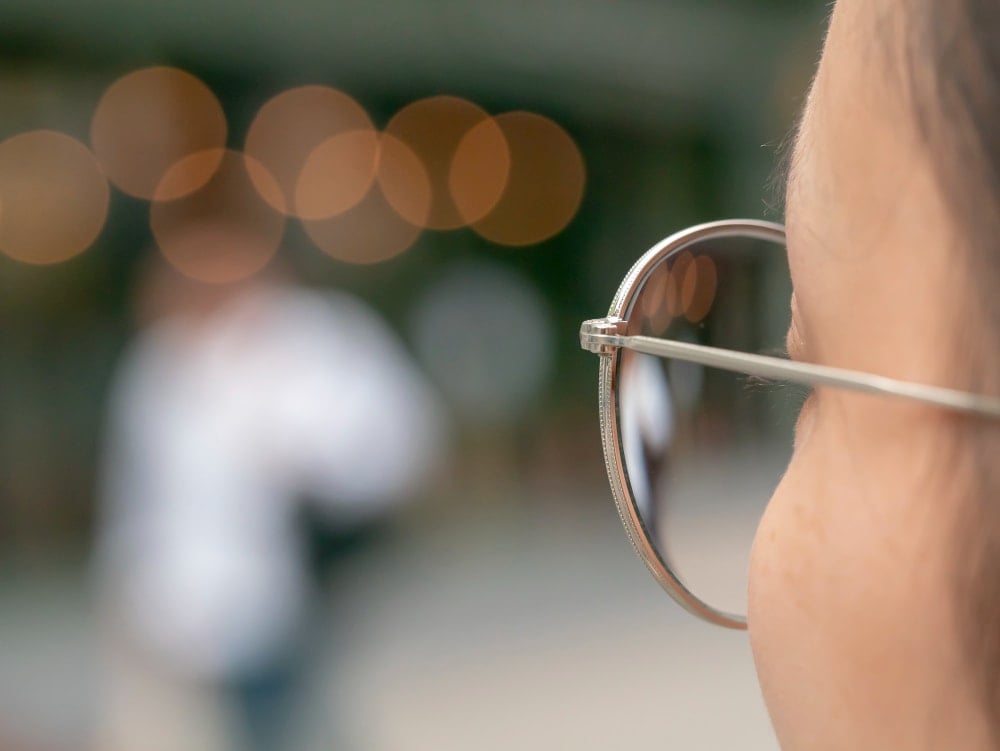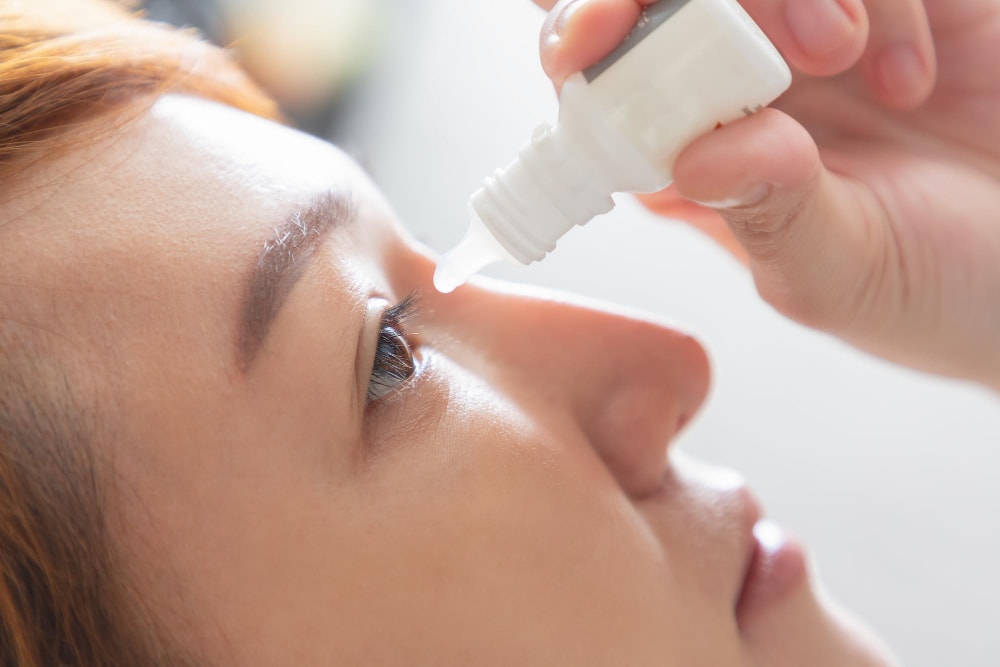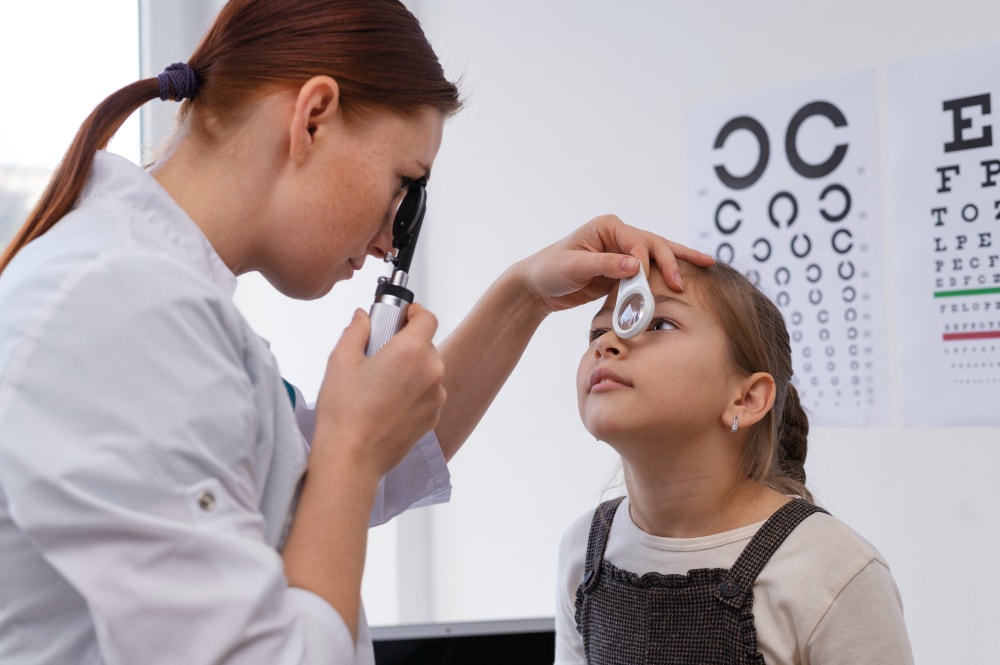Protecting Your Loved Ones’ Eyesight in the Digital Age
In Filipino homes, digital devices are everywhere. Parents work on laptops, children scroll through tablets, and older adults check smartphones for family updates. This constant exposure to screens increases the risk of computer vision syndrome, a condition marked by eye strain, blurred vision, and headaches. While gadgets improve convenience, they also highlight why knowing how to keep eyes healthy in the digital age is essential.
The National Eye Institute has emphasized that many serious eye conditions—such as age-related macular degeneration, optic nerve damage, and diabetic retinopathy—begin silently. Often, symptoms like blurry vision or loss of peripheral vision appear only after irreversible vision loss has already occurred. To protect your family, consistent, comprehensive eye exams and daily habits that support eye health are necessary.
Eye Problems Linked to the Digital Era
The rise of digital technology has reshaped how people work, learn, and connect, but it has also brought new challenges to eye health. Prolonged exposure to screens, poor ergonomics, and unmanaged health conditions all contribute to vision-related problems. Below are some of the most common eye issues linked to our increasingly digital lifestyles.

Computer Vision Syndrome from Extended Device Use
Constant screen time can lead to computer vision syndrome, a condition characterized by headaches, dry eyes, and difficulty focusing. Staring at monitors, phones, and tablets for long periods reduces blink rate and strains the eyes, making even simple tasks feel exhausting.
Blurry Vision from Poor Posture and Prolonged Focus
Poor posture while using digital devices can strain both the eyes and the neck, often resulting in blurry or fluctuating vision. Extended focus on a screen without breaks also tires the eye muscles, causing temporary blurred vision that may worsen over time if not addressed.
Age-Related Vision Changes and Digital Habits
For older adults, natural age-related changes in eyesight—such as presbyopia or reduced contrast sensitivity—are made worse by digital habits. The combination of screen use and natural decline accelerates vision difficulties, increasing the need for corrective lenses or specialized care.
Eye Strain from Improper Lighting
Improper lighting, whether too dim or overly bright, amplifies eye strain during screen use. Glare from devices in poorly lit rooms or harsh fluorescent lighting can cause discomfort, redness, and difficulty concentrating, all of which reduce visual comfort and performance.

Other Common Eye Conditions That Affect Families
Diabetic Retinopathy and Blood Sugar Control
Diabetic retinopathy is one of the leading causes of vision loss among working-age adults. It occurs when high blood sugar damages the blood vessels in the retina, leading to leaks, swelling, or closure. In the early stages, there may be no symptoms at all — making regular eye exams critical for those with diabetes. Maintaining a balanced diet, exercising regularly, and keeping blood sugar in check are essential preventive measures.
Age-Related Macular Degeneration
Macular degeneration damages the macula, the part of the retina responsible for central vision. People with a family history of this eye disease have a higher risk, but lifestyle changes can help. A diet rich in green leafy vegetables, fish with omega-3 fatty acids, and foods containing vitamin E supports retinal health. Limiting exposure to the sun’s ultraviolet rays and using eye protection when outdoors are also recommended.
Refractive Errors and Poor Vision
Nearsightedness, farsightedness, and astigmatism are common eye conditions that cause blurred vision. While correctable with the use of glasses or contact lenses, it’s essential to update prescriptions regularly. In some cases, eye surgery can provide long-term correction for severe refractive errors.
Chronic Conditions and Eye Health
High blood pressure and other chronic conditions can cause optic nerve damage and eye or vision problems by restricting blood flow. Preventive care — from regular checkups to medication and diet control — protects the eyes along with the rest of the body’s systems.
Family History and Other Risk Factors
If you have a family history of age-related eye disease, diabetic retinopathy, or macular degeneration, you’re at a higher risk of developing them yourself. Combine this with lifestyle risk factors like smoking or excessive sun exposure, and proactive care becomes even more critical.

Building Screen-Safe Habits for Healthy Eyes
Minimizing Digital Eye Strain
Spending hours in front of a computer screen puts the eyes under stress. Dryness, poor vision, and discomfort are common signs of computer vision syndrome. Experts recommend the 20-20-20 rule: every 20 minutes, look at something 20 feet away for 20 seconds. Pair this with computer glasses, which reduce glare and filter blue light rays, to protect your optic nerve and improve comfort.
Maintaining Contact Lens Hygiene
For people wearing contact lenses, eye hygiene becomes even more important. Always wash your hands before handling lenses, replace them on time, and never sleep with them unless prescribed. Improper use can increase the risk of eye disease and worsen eye problems. Even if you choose to wear glasses, make sure they are properly fitted to prevent refractive errors and blurry vision from straining your eyes further.
Using Artificial Tears and Eye Drops
Long hours of screen exposure can reduce blink rate, leading to dryness. Lubricating eye drops can relieve discomfort, especially in air-conditioned spaces. Hydration also helps keep eyes healthy, which is why drinking water and limiting caffeine intake complement other preventive measures.

How to Keep Eyes Healthy at Every Age
Building Eye-Healthy Habits Early in Life
Children’s eyes are still developing, which makes them especially vulnerable to damage. Outdoor activities give their eyes a chance to focus on varying distances, reducing the risk of refractive errors like myopia.
Protection is just as important as activity. Even in shaded areas, the sun’s rays can reflect off surfaces and cause harm. Teaching kids to wear sunglasses that block UV A and UV B radiation builds a habit that can prevent age-related vision changes later in life. For sports or playground activities, parents should insist on protective eyewear or safety glasses to avoid eye injuries.
An annual eye exam with an eye doctor can detect lazy eye, blurry vision, and other issues in the early stages. These problems, when treated early, often respond well and prevent more serious eye problems in adulthood.
Maintaining Good Vision in Adulthood
Adulthood brings its challenges to eye health. Office work, online meetings, and evening entertainment can lead to computer vision syndrome, with symptoms such as eye strain, dryness, and headaches. Use computer glasses to reduce glare and blue light exposure, protecting both central vision and comfort.
Special Care for Older Adults
As we age, age-related vision changes become more common. Older adults are more prone to macular degeneration, age-related eye disease, and diabetic retinopathy, all of which can lead to permanent vision loss. An annual comprehensive dilated eye exam or comprehensive eye exam helps identify these conditions before symptoms worsen.
Lifestyle adjustments matter here too: maintaining a healthy weight, controlling blood sugar, and quitting smoking can slow progression. Using more light for reading and tasks can help offset natural changes in the eyes’ ability to focus.

Nutrition and Lifestyle for Healthy Eyes
Balanced Diet and Green Leafy Vegetables
In the Philippines, fresh produce is one of our greatest health advantages. A balanced diet that includes plenty of green leafy vegetables—like malunggay, pechay, and kangkong—provides lutein and zeaxanthin, antioxidants known to filter harmful light rays and protect the retina. Pair these with colorful fruits like papaya, mango, and calamansi, which offer vitamin C, another nutrient that helps keep your eyes healthy.
These everyday ingredients, often found in local palengkes, are more than just kitchen staples; they are frontline defenders against age-related eye disease and macular degeneration. Even traditional Filipino dishes, like tinola with malunggay or laing with gabi leaves, can deliver powerful eye-protective nutrients when prepared with minimal oil and salt.
Omega-3 Fatty Acids and Eye Function
Omega-3 fatty acids are essential for retinal function, tear production, and reducing inflammation in the eye’s tissues. Fish varieties abundant in the Philippines—such as bangus, tilapia, and tamban—are excellent sources. Regular consumption can help treat eye diseases in their early stages, support the optic nerve, and protect central vision.
For busy professionals or parents, omega-3 supplements may be an option, but food sources often deliver additional benefits, such as protein and minerals that support overall health.
Maintaining a Healthy Weight to Reduce Risk Factors
Carrying excess weight increases risk factors for diabetic retinopathy, age-related eye disease, and optic nerve damage. These conditions are often linked to chronic conditions such as high blood pressure and uncontrolled blood sugar, both of which affect the blood vessels in the eyes.
Maintain a healthy weight by combining mindful eating with physical activity. Even simple habits like walking 30 minutes a day, taking the stairs, or doing light chores can improve circulation to the eyes. In master-planned communities like Camella, walkable streets and landscaped open spaces make daily movement a natural part of life.

Exercise Regularly for Better Blood Flow
You don’t need a gym membership to reap the benefits. Walking in the park, cycling in safe community areas, or joining a morning Zumba class with neighbors can all keep you active. Outdoor exercise, when done with eye protection such as wear sunglasses, also lets you enjoy natural light without exposing your eyes to excessive sun’s ultraviolet rays. Making exercise part of your lifestyle will help maintain healthy circulation, support a healthy weight, and contribute to lasting healthy eyes.
Quit Smoking to Protect Your Optic Nerve
Smoking constricts blood vessels and decreases oxygen flow to the optic nerve. Over time, this can lead to optic nerve damage, macular degeneration, and vision loss. For smokers, quitting is one of the most powerful steps toward improving eye health.
Using Protective Goggles for DIY Projects
In the Philippines, where many households take pride in DIY repairs and weekend home improvement, these protective habits are especially important. Even a small wood chip or drop of cleaning solution can cause lasting eye problems if not addressed promptly. Making protective eyewear as essential as gloves or masks during projects is a small but powerful step toward eye protection.
Final Thoughts: Protect Your Eyes for a Lifetime of Clear Vision
Caring for your eyes is a commitment that should span every stage of life. Knowing how to keep eyes healthy means more than reacting to problems as they arise — it’s about building daily habits that support long-term eye health. Clear vision isn’t just a matter of comfort; it’s essential for independence, safety, and quality of life. A healthy diet rich in nutrients, an active lifestyle, and attention to risk factors like high blood pressure and blood sugar can prevent many eye problems before they start.

Celebrate Life’s Milestones in Camella!
House and Lot & Condominium for Sale in the Philippines


